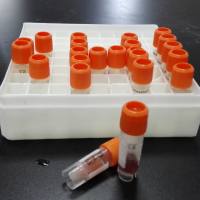Chimeric Mice with Humanized Liver: Tools for the Study of Drug Metabolism, Excretion, and Toxicity
互联网
422
Recent developments in animal models have allowed the creation of mice with genetic alterations that cause hepatocyte damage that results, over time, in the loss of native hepatocytes. If donor, human hepatocytes are transplanted into these animals, they repopulate the host liver, frequently replacing over 70% of the native liver with human cells. Immunodeficient mice that overexpress urokinase-type plasminogen activator (uPA) and, alternatively, with a knockout of the fumarylacetoacetate hydrolase (Fah) genes are the two most common mouse models for these studies. These mice are called chimeric or “humanized” because the liver is now partially repopulated with human cells. In this report we will review the published work with respect to Phase I and Phase II metabolic pathways and the expression of hepatic transport proteins. While the studies are still at the descriptive stage, it is already clear that some humanized mice display high levels of repopulation with human hepatocytes, express basal and inducible human CYP450 genes, and human conjugation and hepatic transport pathways. When the strengths and weaknesses of these humanized mouse models are fully understood, they will likely be quite valuable for investigations of human liver-mediated metabolism and excretion of drugs and xenobiotics, drug–drug interactions, and for short- and long-term investigation of the toxicity of drugs or chemicals with significant human exposure.









